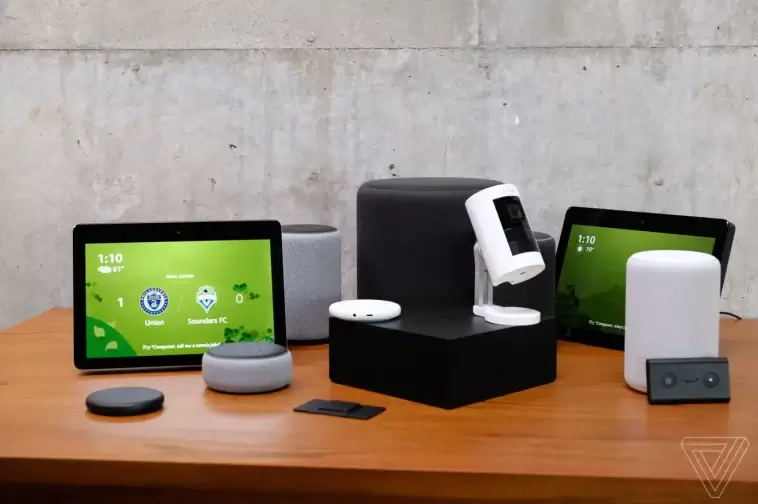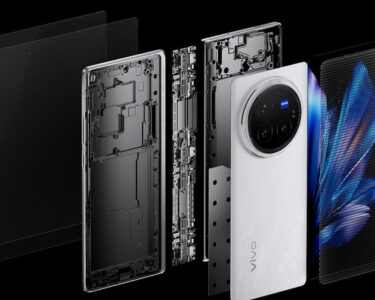More than 100 million devices with Alexa on board have been sold. That’s the all-too-rare actual number that Amazon’s SVP of devices and services, Dave Limp, revealed to me earlier this week. That’s not to say Amazon has finally decided to be completely transparent about device sales, however. While the company claims it outstripped its most optimistic expectations for the Echo Dot during the holiday season, Limp wouldn’t give a number for that. Instead, Limp says, Amazon is sold out of Dots through January, despite “pushing pallets of Echo Dots onto 747s and getting them from Hong Kong to here as quickly as we possibly could.”
But back to that 100 million number. Depending on how you count, it’s either seriously impressive or a serious problem for Amazon. On the one hand, 100 million pales in comparison to the number of phones that have either Siri or Google Assistant pre-installed. On the other hand, the word “pre-installed” is the key thing to pay attention to. With Alexa devices, you could argue, consumers are making an active choice to purchase an assistant instead of just getting a default.
It’s been a while since we’ve had a good, old-fashioned, knock-down, drag-out, winner-take-all platform war. But one might be brewing right now in the world of intelligent assistants. As in any platform war, the numbers come out front and center, and Amazon has the lead on many of those numbers: more than 150 products with Alexa built-in, more than 28,000 smart home devices that work with Alexa made by more than 4,500 different manufacturers, and over 70,000 Alexa skills. The numbers for Google Assistant were lower across the board the last time we heard them, but it’s likely Google will use CES to check in with new ones.
How Amazon got to those numbers is a lot more interesting than the numbers themselves. Amazon’s strategy for Alexa reveals a fundamental philosophy: speak softly and empower everyone to just ship.
Is this really a platform war? Limp, a veteran of Amazon who started out building the Kindle, doesn’t seem to think so — or at least, he believes that it will play out differently from platform wars of the past. “I don’t think it falls into a sporting event,” Limp says, “where there’s going to be one winner.” He adds, “There will be multiple players for the foreseeable future. I don’t think it’s only going to be only two, either. I think there will be more than that.”
It’s easy to see that attitude as a standard executive demurral. Why start a fight if you don’t have to? But having talked to Limp since the early days of the Kindle, I see it as part of his character. He is a laid-back executive who is remarkably candid, pragmatic, and almost chill about issues that other executives would dance around.
As just one example, Limp doesn’t seem too worried that third-party Alexa devices will hurt the Alexa brand. There are more than 150 different products right now with Alexa built-in, more than 100 of which shipped in 2018 and aren’t made by Amazon at all. Some of them are pretty great — the Sonos Beam soundbar and Bose QC35 II headphones are strong examples — but inevitably, some of them are going to be pretty junky.
But Limp’s not worried. “There are hits and misses,” he says. And though Amazon works to ensure that everything with Alexa follows Amazon’s privacy policy and doesn’t misuse data, Limp thinks consumers won’t pin blame on Alexa if they happen to buy a dud. He just wants to make sure there’s at least one good example of each different type of Alexa-enabled gadget. “As long as there are existence proofs in each of the categories,” Limp argues, consumers will figure it out.
”WE’RE STILL A BIG BELIEVER IN MULTIPLE ASSISTANTS.”
Another thing you’d expect in a platform war: walls, exclusivity agreements, and stuff that doesn’t work together. Limp’s not interested in those either. He’s all for allowing device makers to create gadgets that support multiple assistants. He pointed to the Facebook Portal and the partnership with Microsoft to pair up Cortana and Alexa as examples.
When I ask him if Amazon is doing anything in contracts with companies to limit what they do with other assistants, the question was so outside of Limp’s worldview that he is taken aback by it. “Uh, no,” is the simple reply. Limp is even open to working with competitors to make different assistants work better together — for example, by letting them all use the same standard for identifying rooms so you don’t have to set up everything multiple times.
“We’re still a big believer in multiple assistants,” Limps says. “We think they will interact in lots of different ways.” In other words, if you’re wondering what’s keeping Sonos from shipping Google Assistant on its devices, don’t blame Amazon. Of course, it’s easy for Limp to be all kumbaya about competition when Alexa is in a pole position and also when other divisions of Amazon are playing hardball with competitors like Google and Apple.
till,Still, it’s hard not to see Alexa, Google, Apple, and, to a lesser extent, Microsoft fighting for dominance. And CES is the perfect place to watch that fight play out. It may not be the venue where The Next Big Thing gets revealed, but CES is the place to see where the trends are heading.
This year at CES, you can expect Google to reprise its shock-and-awe strategy of literally wallpapering Las Vegas with “Hey Google” ads as it erects a massive booth in the parking lot outside of the convention center. Google started a little behind Alexa when it launched its Home products, and it’s well behind Alexa when it comes to third-party support, so going all-in on the event where all of those third parties are partying makes perfect sense for Google.
“CUSTOMERS DO NOT CARE ABOUT AN AD CAMPAIGN ON THE LAS VEGAS STRIP. THEY JUST DON’T.”
But not so much for Amazon. “Customers do not care about an ad campaign on the Las Vegas Strip,” Limp says. “They just don’t. It’s playing to the industry. It’s not playing to who really matters. Will we have a slide with a diving board and a pool? No, that’s not the plan. But I think we’re going to have lots of partners with really good products, which I’m excited about.”
Amazon won’t have a gigantic booth, nor will it stage an over-the-top keynote, but it will have a presence. That presence will be the ubiquity of “Works with Alexa” labels on gadgets throughout the show floor alongside new devices that have Alexa in them. “CES is about making sure that the partners we have [are supported],” Limp says. “It’s less about Amazon itself.”
When it comes to Alexa products, that’s just how Amazon rolls. There’s no clearer example of how Amazon does things than how it announced the last wave of Echo devices. This past September, Amazon held an event in Seattle where it announced literally dozens of Echo and Alexa products. It showed off new Echos and wall clocks, new screens, and wall plugs, and even a microwave.
There was no preamble, no splashy magazine feature, just Amazon saying something like, “Here is everything we’re releasing. Here’s what they do. Have at it.” That strategy can backfire. It certainly doesn’t build hype, and it makes it all too easy for products to get lost in the shuffle. “What we want to do is not speak through an ad campaign or a keynote,” Limp says, “but instead speak through the results.”





